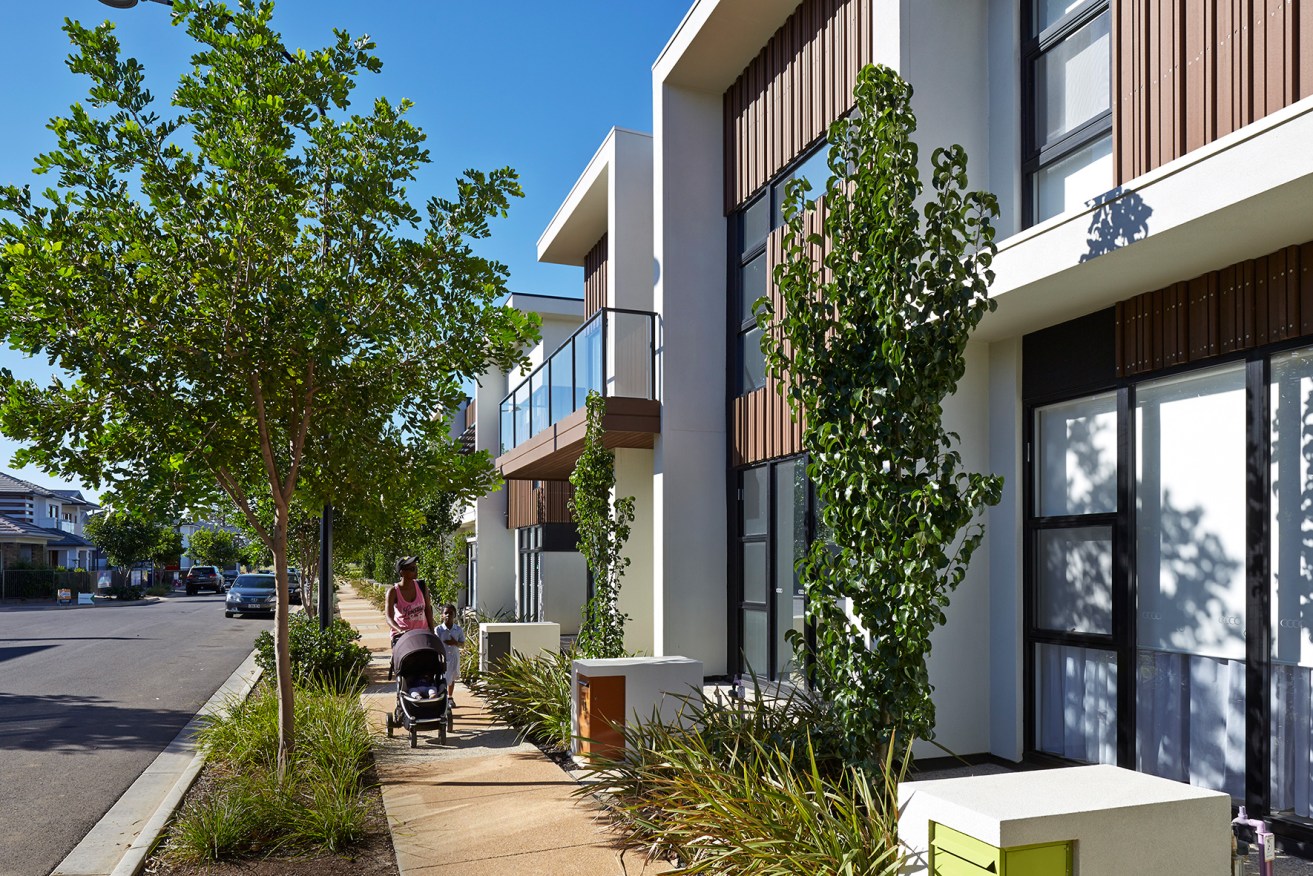New planning code aims to reverse negative consequences of Adelaide’s urban infill
A new design guide under incoming statewide planning reforms laments the widespread loss of privacy and vegetation in Adelaide’s suburbs over recent decades and argues for the interests of pedestrians over private transport users.


An example of a 'walkable' street in the guide to design. Photo: Sam Noonan
Tree cover on private properties in Adelaide’s suburbs has decreased by as much as 30 per cent over the past decade, according to State Planning Commission chair Michael Lennon.
He argues this among a series of poor design outcomes that have occurred during Adelaide’s historic shift away from greenfields development and towards higher-density infill housing.
He says using broadly accepted principles of “good design”, the state’s new planning code can improve the quality of future infill, to ensure that the built form of increasingly dense housing doesn’t undermine the sense of community and walkability of Adelaide’s suburbs.
The commission this morning released its guides to design and neighbourhood growth under the new statewide planning code.
They envision a future in which Adelaide’s suburbs have wider footpaths, significantly fewer driveways, slower traffic, more vegetation and generally less pedestrian-hostile streetscapes.
The loss of vegetation and privacy through the construction of taller buildings that occupy more space on the block than traditional suburban houses is a legitimate concern, the documents argue.
In his introduction to the guide on neighbourhood growth and change released today, Lennon writes: “There are significant community concerns around … traffic on local streets, loss of vegetation and tree canopy, site coverage when existing buildings are replaced with more dense building forms and overshadowing and the loss of privacy.”
“The Commission has also identified a number of challenges within the current SA Residential Code that has led to a dominance of double garages, a lack of landscaping and low streetscape amenity across our suburbs.
“We are proposing a range of solutions in the Code to improve residential infill such as a reduction in driveway set-backs and widths, deep soil provisions (to allow for tree-planting) and the inclusion of design features in street-facing building façades.”
Lennon told InDaily that the amenity of many Adelaide suburbs has been harmed by new built form, and that future infill housing needs better design.
“We (have been) closing the street to passers-by,” he said.
“What was an open neighbourhood (is now) a wall of building mass, broken up by driveways.
“We want to make suburbs more pedestrian-friendly … there are design solutions to this.”
The guide to design features a case study of a “walkable infill neighbourhood” in which there are continuous footpaths without driveways, separated from the street by a planted verge.
“The removal of driveways from the primary street also provides space for more on-street parking, inhabitable rooms at ground level, which contribute to activation and passive surveillance of the street and productive front gardens, capable of supporting tree growth,” the design guide says.
“This is important to combat rising urban temperatures, create more walkable and liveable places and support a reduction in energy consumption.”
Instead of more double garages, the guide suggests locating “vehicular crossovers” on “secondary streets or rear lanes where possible” and including breaks between adjacent garages or carports to accommodate landscaping.
You can read the guides to design under the new planning system here and the guide to neighbourhood growth and change here.
The Commission also released a guide to heritage and character under the new system. You can read it here.
It will undertake two rounds of formal consultation on the proposed code when it is released – for regional SA in mid-2019 and metropolitan SA in early 2020.




